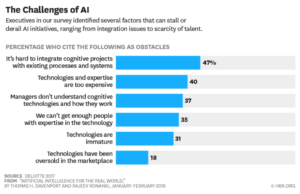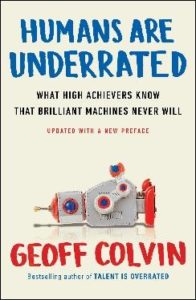
January 22, 2020
In the digital world,
you have to put the last mile first

As we embark on the new decade of 2020, it’s impossible to ignore the virtually unanimous consensus that artificial intelligence and machine learning will be the defining competitive differentiator for companies of all sizes across all industries.
At their heart, AI & ML serve as the data analytics engine that will separate good decision making from bad decision making. They will be foundational elements of every successful business transformation and every failed digital transformation.
To be on the winning side of this new competitive equation, you must put the last mile, the decision or decisions you need to make to achieve the desired business outcome, ahead of the first mile, the data and technology tools you’ll use to make those decisions. Simply put you have to put the business outcome first not last.
Use Minimum Viable Decisions (MVD) to continuously learn faster how to make better decisions

If the goal is to make better decisions faster than your competition, then you must start with the ultimate business outcome you want to achieve and figure out the decisions you need to make to achieve that outcome. This approach will enable you to segment your decisions from the data and analytics tools you’ll need to make them.
Using an MVD approach will allow you to breakdown complex decisions into manageable component parts that allow you to continuously learn more as you move forward and make further decisions. It will help you better align the right data and digital technology tools necessary to achieve the desired business outcome. It will also greatly improve your speed to market and time to value.
Successfully implementing AI & ML is a lot harder than most companies anticipated

As I wrote in my October blog, over 70% of all digital transformation initiatives failed to reach their desired outcomes as documented by a 2018 McKinsey global study. The primary reason for these failures is that companies focused on developing and delivering new digital technologies not on the business transformation outcomes.
While AI & ML can definitely provide more and better insights, their successful implementation and deployment is both challenging and comprehensive. The early evidence suggests that companies are struggling to integrate and align their data analytics activities and functions with how they operate and makes decisions. As one observer said, “most companies are spending money on AI, not making money with it.”
For many companies, the time and resources it takes to build and scale their own internal AI & ML operational processes and tools is beyond their means. A more realistic approach is to leverage external “transformation-as-a-service” resources who provide AI & ML technologies with “basic tasks and knowledge” already embedded along with other data, cloud and mobile technology tools.
The last mile of decision making belongs to humans not machines

In his recent book Humans Are Underrated, author Geoff Colvinexplains how the skills and abilities that will prove most essential to our success are not machine driven but human driven. The innate human skills of empathy, creativity, social sensitivity, storytelling, humor and building relationships are essential to making the right decision especially when all the options aren’t known and all the facts are not available.
These high-value skills create tremendous competitive advantage—more devoted customers, stronger cultures, breakthrough ideas, and more effective teams as shown in three examples below:
- The Cleveland Clinic, which emphasizes empathy training of doctors and all employees to improve patient outcomes and lower medical costs
- The U.S. Army, which has revolutionized its training to focus on human interaction, leading to stronger teams and greater success in real-world missions
- The Stanford Business School, which has overhauled its curriculum to teach interpersonal skills through human-to-human experiences
While it is tempting to chase the latest bright shiny AI & ML digital technology, it’s a fools errand if you haven’t previously identified the business transformation outcome you want to achieve. When I help my clients evaluate a new digital technology, the first question we ask is “to what end?”
I think the studies and use cases above make a very compelling business case that linking employee happiness to customer happiness results in industry leading business performance.
As always, I am interested in your comments, feedback and perspectives on the ideas put forth in this blog. Please e-mail them to me at here. And, if this content could be useful to someone you know please share it here:


